arrowwood viburnum
Viburnum dentatum 'Blue Muffin'
This handsome selection of the North American native arrowwood viburnum boasts neat foliage, white spring … Continued
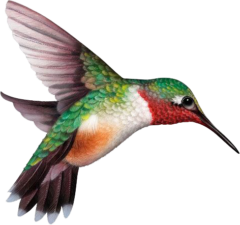 Hummingbirds, bees and butterflies are well-known pollinators, but there are thousands of unsung pollinator heroes, including moths, wasps, flies, and beetles, many mammals, birds, and reptiles, who also take on the job.
Hummingbirds, bees and butterflies are well-known pollinators, but there are thousands of unsung pollinator heroes, including moths, wasps, flies, and beetles, many mammals, birds, and reptiles, who also take on the job.
Pollinators move from plant to plant, fueling up with pollen and nectar from blooming trees, shrubs, perennials, annuals, vegetable plants, and herbs. As they move, the pollinators transport and deposit pollen, fertilizing plants and allowing them to reproduce.
Pollinator plants can be native and non-native, but not all flowering plants are equal when it comes to providing the highest quality protein-rich pollen. Many hybrids don’t even produce pollen at all. The following list includes pollen-rich plants to include in your garden to provide pollinators with food.
Local butterfly expert Lenora Larson has created these informational handouts. You can download them here!
• Butterflies: Flying Flowers in your Garden!
• A Vital Connection: Native Plants and Butterflies
• Long Lips Farm Caterpillar Foodplants
• Butterfly Bartending: Nectar Flowers
• Long Lips Farm: Selected Butterfly Nectar Flowers
• Bee Friendly: Plants for Bees and Other Pollinators
Since 1970 the population of North American birds has dropped nearly 30% — almost three billion birds have vanished from our forests, grasslands, and backyards in less than a human lifetime. It’s a chilling fact that makes it clear that we must act as individuals to help ensure their survival.
Most importantly, ninety-six percent of all terrestrial bird species rear their young on insects so it is also important to grow plants that feed insects to provide a well-rounded habitat in your garden.
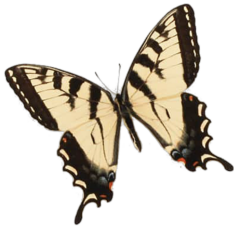
Viburnum dentatum 'Blue Muffin'
This handsome selection of the North American native arrowwood viburnum boasts neat foliage, white spring … Continued

Viburnum nudum 'Brandywine'
This shrub really shines in late summer and fall. White flower clusters give way to … Continued
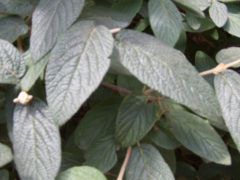
Viburnum rhytidophylloides 'Allegheny'
This great shurb adds incredible textured contrast with leathery, dark green foliage that makes a … Continued
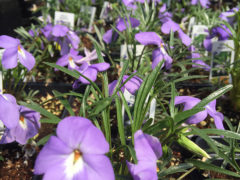
Viola pedata
Bird’s foot violet has purple flowers with orange centers. The leaves are shaped like bird’s … Continued
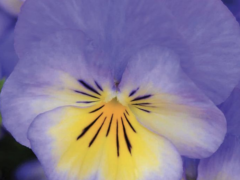
Viola 'Halo Sky Blue'
These hardy, heat tolerant and long-lasting perennials have big sky blue, pansy-like blooms with bright … Continued
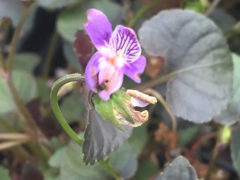
Viola labradorica
Hardier than pansies, violets tolerate cold to -20° as well as summer heat. Plants form … Continued
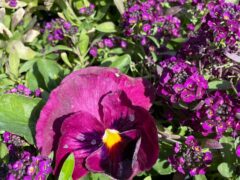
Viola tricolor var. hortensis
Pansies provide food for herbivorous, pollinators, and people but they’re most beloved for their early … Continued
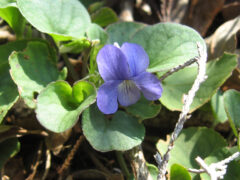
Viola walteri
Scalloped round leaves are veined in silver and topped with bluish-purple flowers open in early … Continued
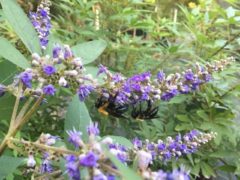
Vitex agnus-castus
Grown in as a vase-shaped multi-trunk shrub to 10-15′ tall or trained as a single … Continued
Crataegus pruinosa
Waxy-fruited hawthorn is a native large shrub or small tree in the rose family found … Continued
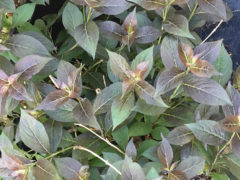
Weigela florida 'Bramwell'
With a dense and upright form and dark foliage providing incredible contrast to the deep … Continued
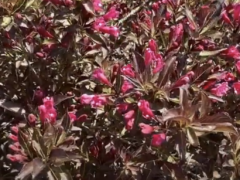
Weigela florida Spilled Wine®
Fabulous deep purple foliage and bright pink flowers. This easy-to-grow shrub grows wider than tall, … Continued